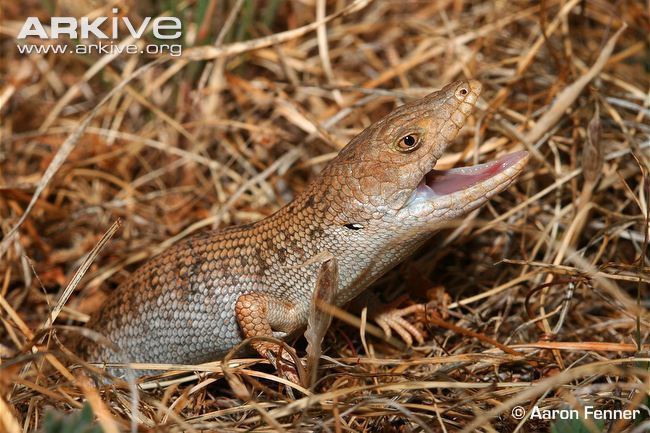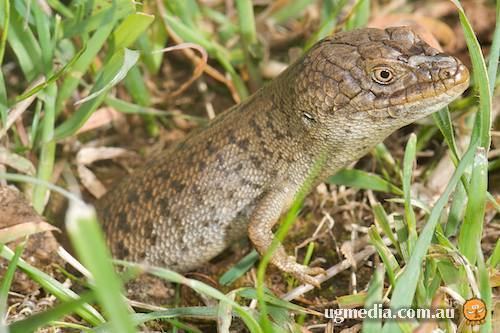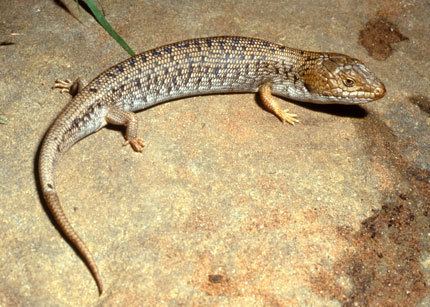Family Scincidae Scientific name Tiliqua adelaidensis Rank Species | Class Reptilia Genus Tiliqua Phylum Chordata Order Scaled reptiles | |
 | ||
Similar Blue‑tongued skink, Centralian blue‑tongued skink, Western blue‑tongued lizard, Blotched blue‑tongued lizard, Scaled reptiles | ||
The Adelaide pygmy blue-tongue skink or pygmy bluetongue (Tiliqua adelaidensis) is a species of skink in the Scincidae family. It was previously thought to be extinct and only rediscovered in 1992.
Contents

Rediscovery and conservation

Found only in the Mid North of South Australia, it was for a time believed to be extinct. It was rediscovered in 1992, when a researcher found the remains of an adult male lizard in the stomach contents of a dead brown snake, near Burra. The species is now considered to be endangered.

The habitat and range of pygmy bluetongues is very restricted, as individuals live in old spider burrows within areas of unploughed native grasslands, which have become rare due to extensive development of cereal cropping throughout the region. Since their rediscovery, surveys have estimated that 5,000 to 7,000 individuals live in scattered areas between Kapunda and Peterborough.

Conservation efforts to maintain the species include the establishment of the Tiliqua Pygmy Bluetongue Reserve near Burra, by the Nature Foundation SA in 2010.
In February 2016 Zoos SA announced the first success of a captive breeding program of pygmy bluetongues at Monarto Zoo.
Ecology

When artificial burrows were offered in the field to lizards, all lizards preferred vertical rather than angled burrows and juvenile lizards preferred more shallow burrows than did adult lizards. Observation of 36 artificial burrows showed a significant increase in lizard numbers during 2001–2002 and over three surveys. The study suggests that this local increase in population could be due to lizards locating appropriate burrows much easier. The study results suggest that artificial burrows could be a tool for conservation management of this species.
Another study compared the fitness of female lizards in natural burrows and artificial ones, over a three-year period. The study showed that the female in the artificial burrows had a better body condition who produced a larger offspring with a better body condition also.
